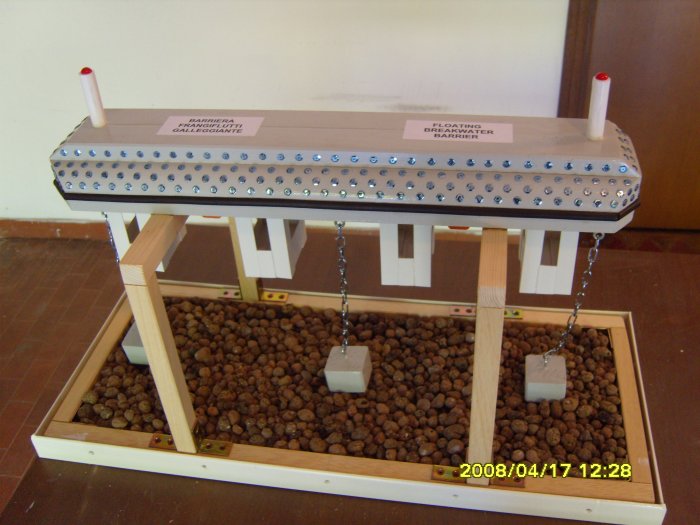
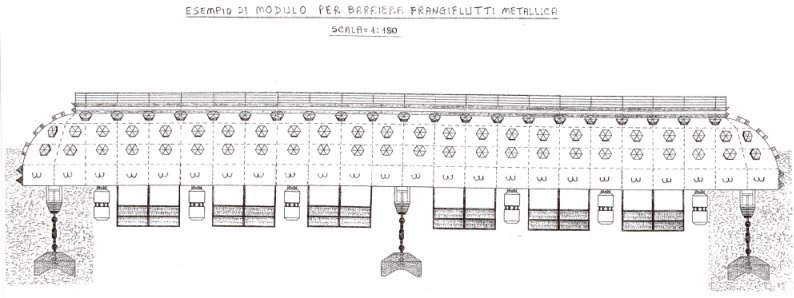
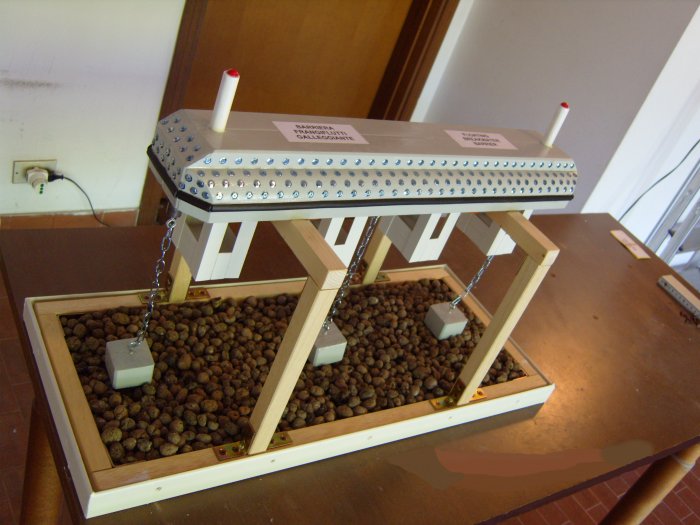
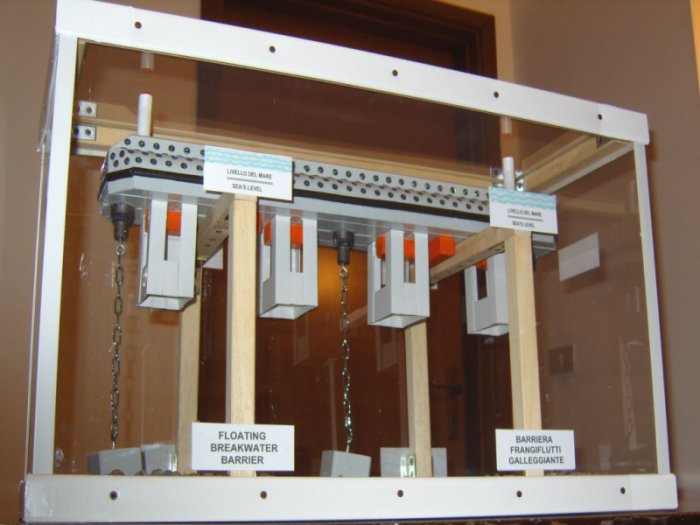
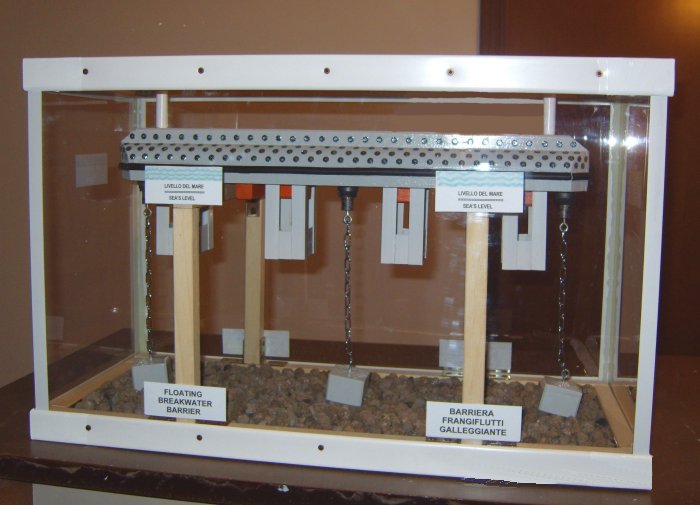
FEATURES
AND FUNCIONALITIES OF THE ABOVE
ILLUSTRATED
FLOATING BREAKWATER MODULE
As I believe
it can appear evident from up-exhibited pictures, the kind of module I propose,
for its best
performance in coastal defence, should be utilizable on littorals whose waters
could have at least a 9-
appendages
they are endowed.
This
“floating reef” model, with its hexagonal breakwater reliefs that surround it
perimetrically
till to the
top and serve for smashing and weakening the highest wawes in case of rough
sea,
because of
its heavy weight and size, and as it can be filled with a remarkable body of
water
in its
coffer-dams purposely preset in its lower level as ballast, it can excellently
carry out the
role of
sandy shore’s defender.
Its peculiar
springly anchorages which depart from the “keel” and are joined to heavy and
suitable concrete
or metal anchor logs, together with their “head frame drift fins” that enclose
a large mass of water and “draw” at a
profundity where waters are more quiet, they can offer
a
considerable hydrodinamic resistance to the moving of standing above structure
either in
horizontal
or in vertical direction, and render itself nearly irremovable also when
there is
stormy
sea.
As a matter
of fact, this modules have hulls 12-
all
appendages except, and they must be deemed an effective option to natural rocky
bloks or
concrete tetrapods. Really for
what concerns the marine environment protection and ichthyic
fauna, given their
floating peculiarity and their underwater architecture fundamentally open that
don’t obstruct their encumbering area and don’t interfere with natural flowing
of undercurrents,
they are
without doubt preferable to traditional rocky reefs.
The
employment of the floating breakwaters I’ve designed, as they can be placed in
all useful
directions also at a remarkable distance from the shore, they can permit an
advanced smashing
of the
more powerful and devastating billows.
Moreover,
considering that they don’t alter preexistent sounding’s shape and they avoid
the
progressive silting up of littoral zone included between reefs and beach,
they should be
certainly an
effective contrast to the coastal erosion.
of artificial
breakwater barriers, after sometime, it could follow not more necessary
carrying
out the recurrent
refeeding of eroded beaches by sands collected from deep soundings with
a huge waste
of money, otherwise better usable by Local Government interested in such
requirement.
For what
regards the estimated cost of this kind of construction, it could result in a
first time
a little
higher if compared with that of a traditional rocky reef which however presents
all the
above-mentioned
disadvantages and prevents the recovery, the redrawing and a possible
and durable
enlargement of existent sandy shore.
Only for
example and with an approximation of 10-15%, depending either from different and
particular
features claimed by Local Government or from various soundings on which these
structures
have to be anchored, the total expense for a more deep waters module having
dimensions of 18
x 100 x
for a shallow waters module of dimensions: 12 x 80 x 6 it should be about 1/Million of Euro.
Internet address: http://web.tiscali.it/artificialisle
Telefon number: + 39 051 821609
PATENTED - All rights reserved
Last updating: April, 2008